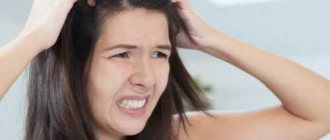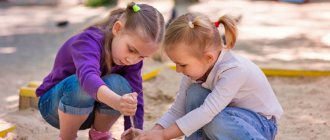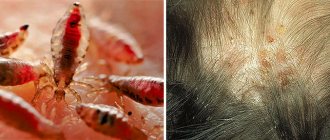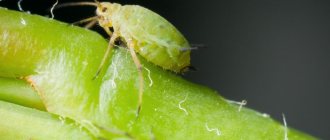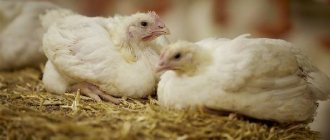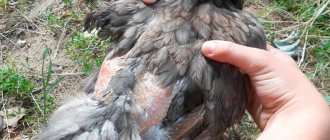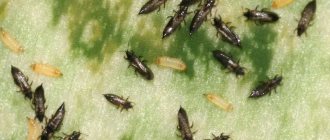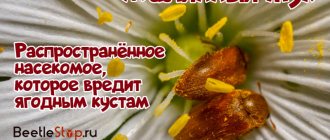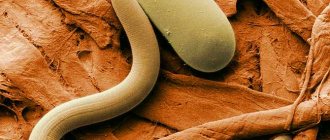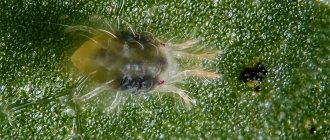Pediculosis is the infestation of the skin and hair on the human body by lice. These parasites feed on the blood and lymph fluid of the victim. People living in unsanitary conditions are especially susceptible to this disease. However, even a self-sufficient person runs the risk of contracting this disease. Children are no exception. During contact, parasites very quickly penetrate the hair and skin, and therefore it is very difficult to protect a child from this problem when visiting a preschool or educational institution. Therefore, the prevention of head lice in kindergarten is one of the most pressing issues.
Causes of infection
Among the reasons for the appearance of lice are poor hygiene, stress, and chronic diseases. However, in fact, there is only one cause of lice - direct infection through contact with a carrier of the parasites. Lice cannot jump like fleas, so contact must be close enough for an infestation to occur.
Public transport
You can become infected with lice:
- in public transport (especially crowded ones);
- in a store fitting room (lices can move from an infected person to an item, and the next victim will be the next one trying on the same item);
- in a swimming pool;
- in a beauty salon.
The main variants of infection in kindergarten:
- physical contact – children constantly touch each other’s hair while playing;
- other people's things - kids exchange hats, hairpins and headbands, combs; this also includes sleeping on someone else's pillow.
The idea that lice grow in dirty hair is another common misconception. During the research, it turned out that parasites feel more comfortable on clean skin.
Information for teachers
Instructions on head lice for educators require compliance with basic rules. Children should walk clean and tidy. You are not allowed to join the group if your appearance does not meet these requirements.
Educators must ensure that children do not exchange clothes, hairpins, or hats, use only their own accessories, and sleep in their own cribs.
Information about head lice should be conveyed to parents at every parent-teacher meeting. If an infected child is discovered, an unscheduled meeting is held and information is brought to the attention of the child. Parents should carefully examine their children's heads and carry out preventive treatment against lice.
Effective lice preparations for children
Symptoms of lice
Lice infestation manifests itself quite quickly; after 1-2 days it can be identified by the presence of the following signs:
- severe itching of the scalp;
- bite marks (swelling sometimes with a drop of dried blood in the center);
- the appearance of a rash, peeling;
- the presence of adult parasites and nits at the hair roots at a distance of about 1 cm from the skin;
- the child may feel insects moving in the hair.
In addition, due to constant itching, children become irritable, sleep worse, and have problems with performance, concentration and attentiveness.
Regulatory regulation of the activities of kindergartens
All sanitary requirements for preschool organizations are set out in SanPin 2.4.1.3049-13. The document includes rules and regulations concerning all aspects of the functioning of educational institutions for preschool children:
- placement of a kindergarten;
- maintenance and arrangement of the adjacent territory;
- operating conditions and arrangement of internal premises;
- natural and artificial lighting;
- operation and repair of heating and ventilation systems;
- operation and repair of water supply and sewerage systems;
- food preparation and serving;
- reception of children, daily routine and organization of the educational process;
- basic anti-epidemic and hygienic measures.
Inspection
SanPin, in particular, establishes measures to prevent head lice in preschool institutions. The document also regulates the actions that should be taken when lice is detected in a kindergarten and regulates the duration of quarantine.
What activities are carried out in the kindergarten from the moment lice are discovered?
If lice are found in at least one of the kindergarten students, certain measures must be taken:
- the infected child is isolated from other children;
- conduct an examination of the remaining children who were in contact with the infected person in the group;
- the teacher or nurse informs parents about the fact of infection (without disclosing the name of the infected child), advises them on the treatment and prevention of head lice;
- A quarantine is declared in the kindergarten.
During quarantine, disinfection measures are carried out. They include treatment of the room and bed linen.
If lice are found in several children, the administration of the preschool educational institution must transmit information about the outbreak of head lice to the assigned clinic.
A sick child can attend kindergarten only after complete recovery and a certificate from the clinic or SES has been provided.
Mandatory inspection
The order on pediculosis in educational organizations provides for inspections every month, keeping a special journal where the results are recorded.
The medical worker examines each child in a room with good lighting. Additionally, a fine-toothed comb, a magnifying glass or a magnifying glass is used. Particular attention is paid to the hair on the back of the head, temporal part, and forehead. A video of a proper lice inspection is presented below.
According to the decree of the Ministry of Education, the results of the inspection of the kindergarten are recorded in a special journal. A disease prevention plan is developed independently. The program is developed by a nurse.
If a child is found infected with lice, the nurse acts according to the regulations. Children must be examined for head lice after summer holidays or long weekends. According to the new order on pediculosis, the nurse is required to conduct 12 scheduled checks per year in a preschool educational institution.
SanPin for staff
In most cases, the appearance of head lice and the spread of parasites in kindergartens is caused by violation of sanitary rules. To avoid this, the administration and medical staff of the preschool institution must carefully study the SanPin on head lice and follow all the instructions specified in it, including preventive measures.
When drawing up an action plan for head lice in a kindergarten, the nurse should also rely on SanPin 3.2.1333-03, which regulates measures for the prevention of parasitic diseases in the Russian Federation.
Lice in a child: first reaction
Not all parents are able to maintain composure when they see parasites on their child’s head. Disgust, confusion, even panic as the first reaction to lice are not uncommon. It must be said that such unpleasant emotions in many people are caused not only by lice, but also by cockroaches, spiders and other flying and crawling things.
Disgust is an absolutely normal reaction to potential danger. In many ways, these are our instinctive fears, since a person retains the memory not only of the events of his life, but also of the dangers that humanity has faced in the course of its history
And since the bites of some insects are fatal, caution in front of them helped a person survive
Now people have learned to cope with many infections carried by insects, but subconscious fear still remains. Education plays a significant role in this. The fact is that a small child treats the world around him, including insects, with curiosity and interest; a feeling of disgust is not at all characteristic of him. But only until he is faced with the reaction of adults, which can subsequently become entrenched in his subconscious.
Separately, it should be said about certain negative associations associated specifically with lice (dirt, unsanitary conditions), which can also provoke such reactions. Meanwhile, children from quite prosperous families often suffer from head lice, which sometimes comes as a shock to their parents.
Fighting methods
The fight against lice involves mechanical methods and the use of medications. At the initial stage, you can try to comb insects and their eggs out of your hair. A fine comb is used for this.
What will certainly help get rid of lice without the use of chemicals is to cut the child's head, and do it immediately. It is easier for parents of boys to decide on such a step, but girls will most likely categorically refuse such a radical decision.
In this case, it is worth visiting the pharmacy and purchasing one of the many modern remedies for parasites, including:
- shampoos;
- gels;
- emulsions;
- sprays.
Lice remedies
The products must be used according to the instructions. Sometimes one treatment is enough, but most often you will need to repeat it, since not all products have an effect on nits, which means there is a danger that lice will appear again.
If you have head lice in a preschool educational institution and your child brings home lice, it is very important to act comprehensively. This is the only way to quickly get rid of parasites and prevent re-infection. In addition to treating the child’s hair, it is necessary to wash the child’s bedding and clothes with a special product or boil them.
Periodically, it is necessary to conduct a thorough examination of the hair and scalp to make sure that there are no parasites left.
Lice therapy
Measures to combat pediculosis include the use of professional parasite medications. There are many products sold in pharmacies. You can fight lice with medications in the form of shampoo, spray, ointment, lotion, or emulsion. Parents have the right to independently choose a remedy for lice, based on the individual characteristics of the child’s body and age.
Where to complain if there is a lice epidemic in a kindergarten?
If head lice is discovered in a kindergarten, but the administration ignores the problem and does not take appropriate measures to eliminate it, you need to know where to complain. Since the implementation of sanitary norms and rules is controlled by the Sanitary and Epidemiological Service, it is necessary to contact the city or district branch in such situations.
Representatives of the SES are required to visit the kindergarten and confirm the presence of parasitic infection. After the inspection, the management of the preschool educational institution is issued an administrative order, and the kindergarten is closed for quarantine.
We inform other parents and the school
However, since head lice is a contagious disease that spreads quickly, it is, of course, important to inform the parents of other children with whom your son or daughter has been in contact. This will help prevent the spread of the disease, as well as possible reinfection of your child.
But, as a rule, parents try to avoid such conversations, fearing an inadequate reaction. Shame, fear of condemnation and possible ridicule of the child... There are reasons for this. Unfortunately, many people hold deeply erroneous views on the disease. The main thing in this situation is to understand that timely information conveyed to others will help protect not only them, but also you, because no one is safe from re-infection!
Since the problem is not new, there is a good chance that the parents of your child's classmates have already dealt with it and will therefore be sympathetic to your message. And if not, then you can act as a kind of expert and share your treatment experience, for which the parents will only thank you.
Be sure to inform the class teacher that your child has been diagnosed with lice. And it’s better to do this in a personal conversation to make sure that the teacher understood everything correctly. Ask the class teacher to inform the nurse and parents of all children, emphasizing anonymity. Rest assured, the school is no less interested in ensuring that its walls are lice-free than you are. And the key to a successful fight against the spread of head lice is the coordinated actions of parents and schools.
